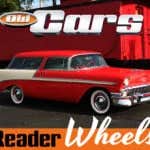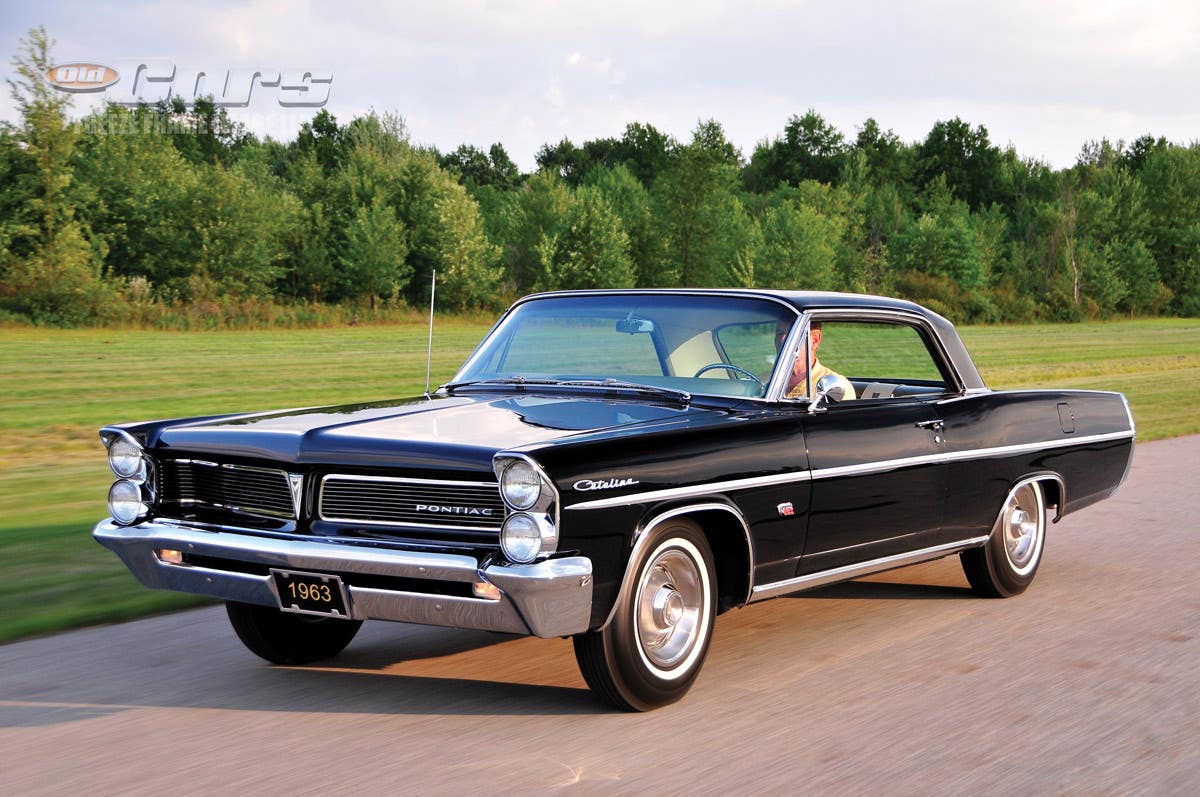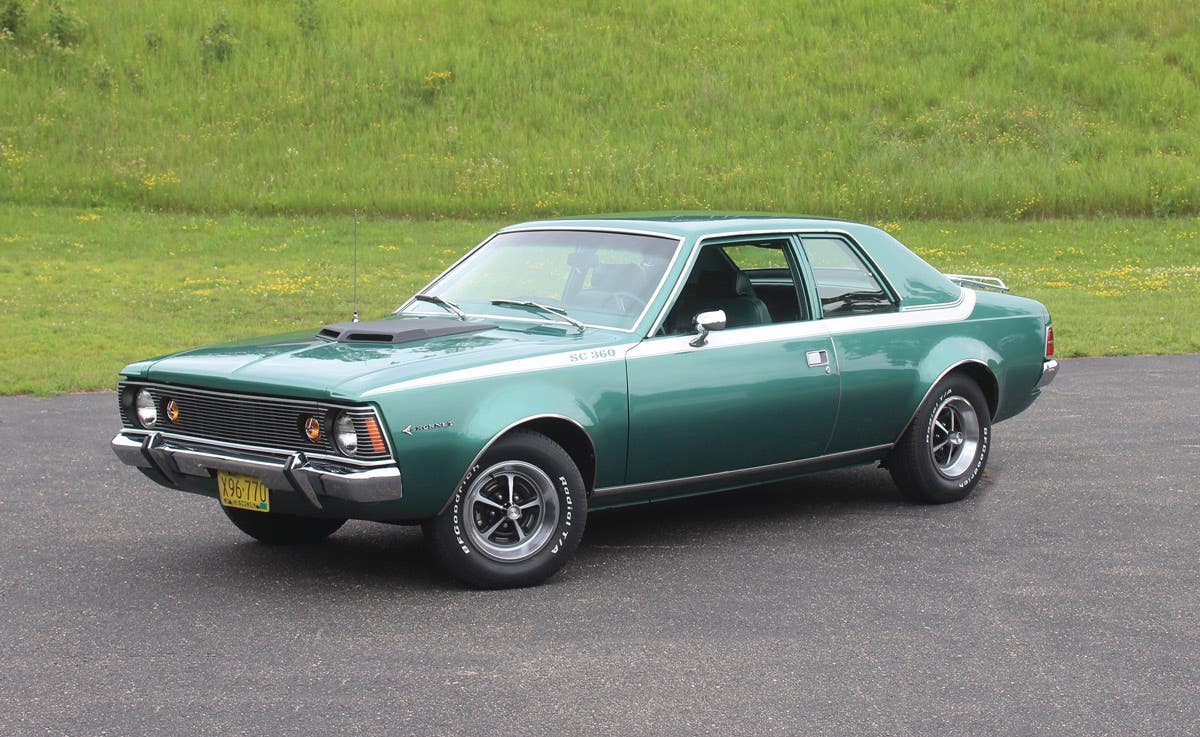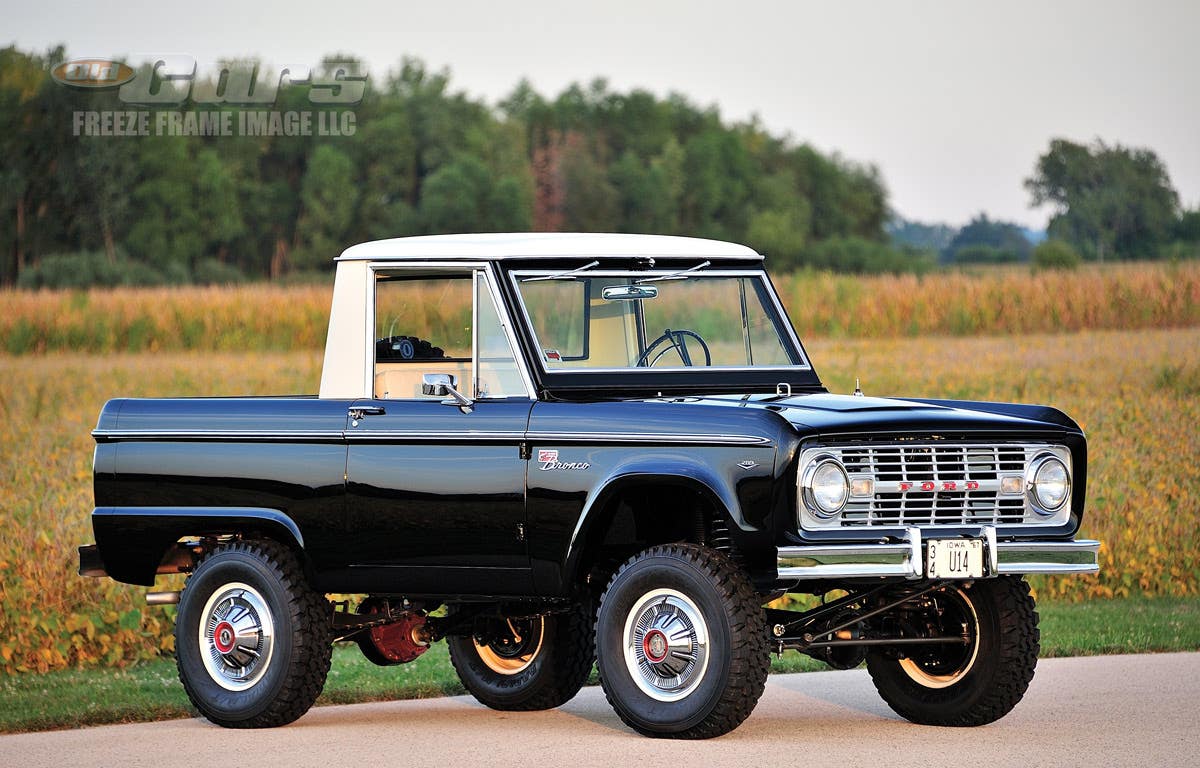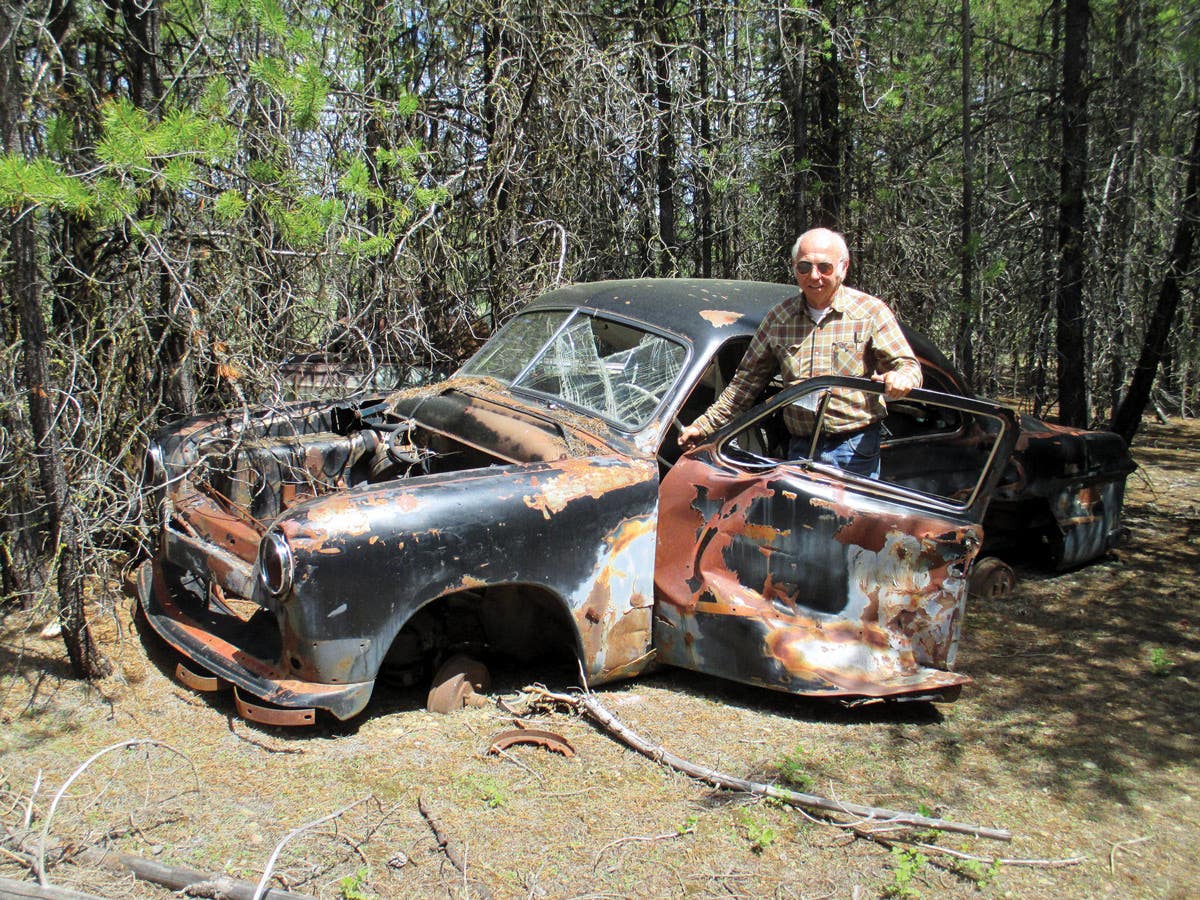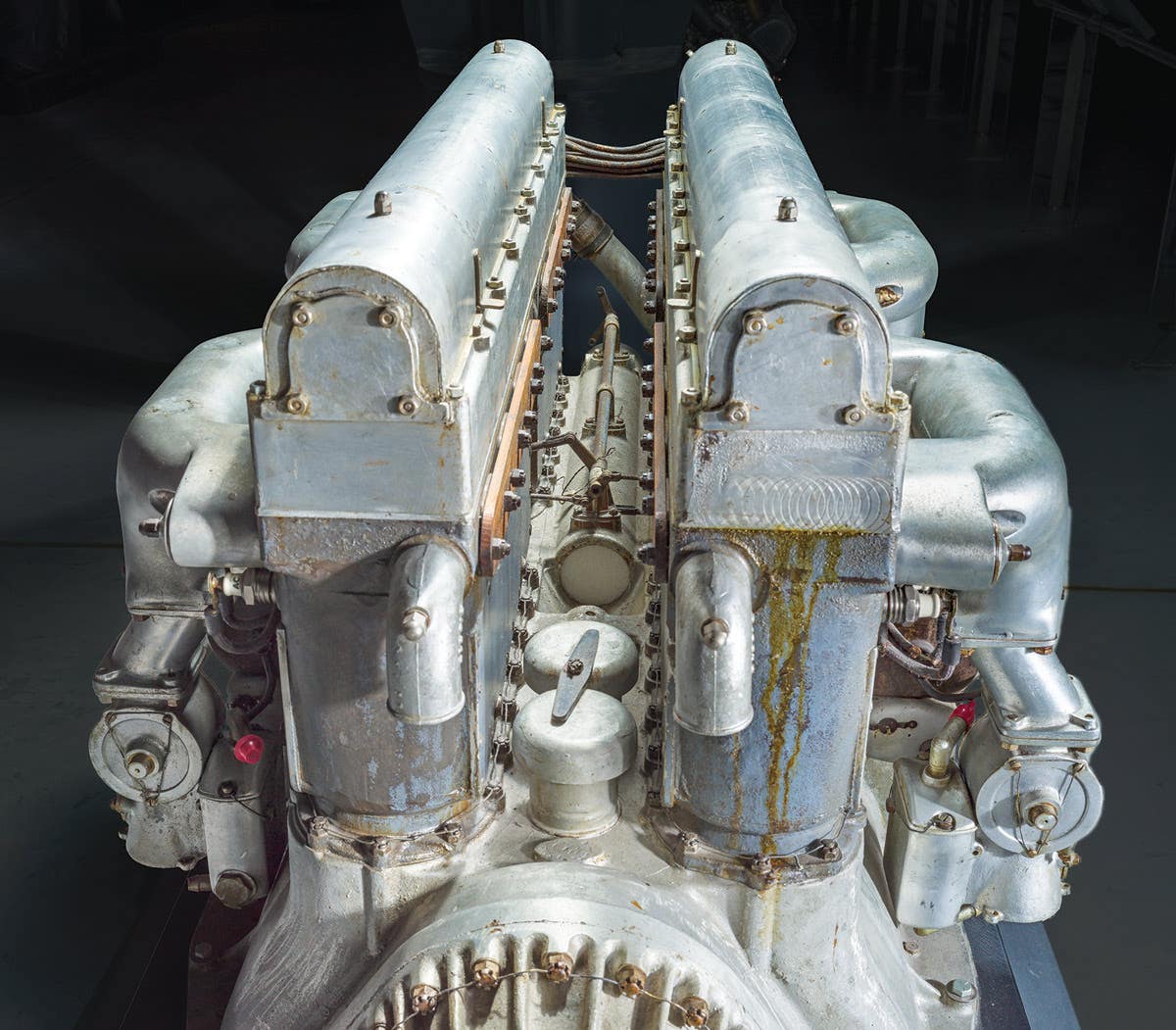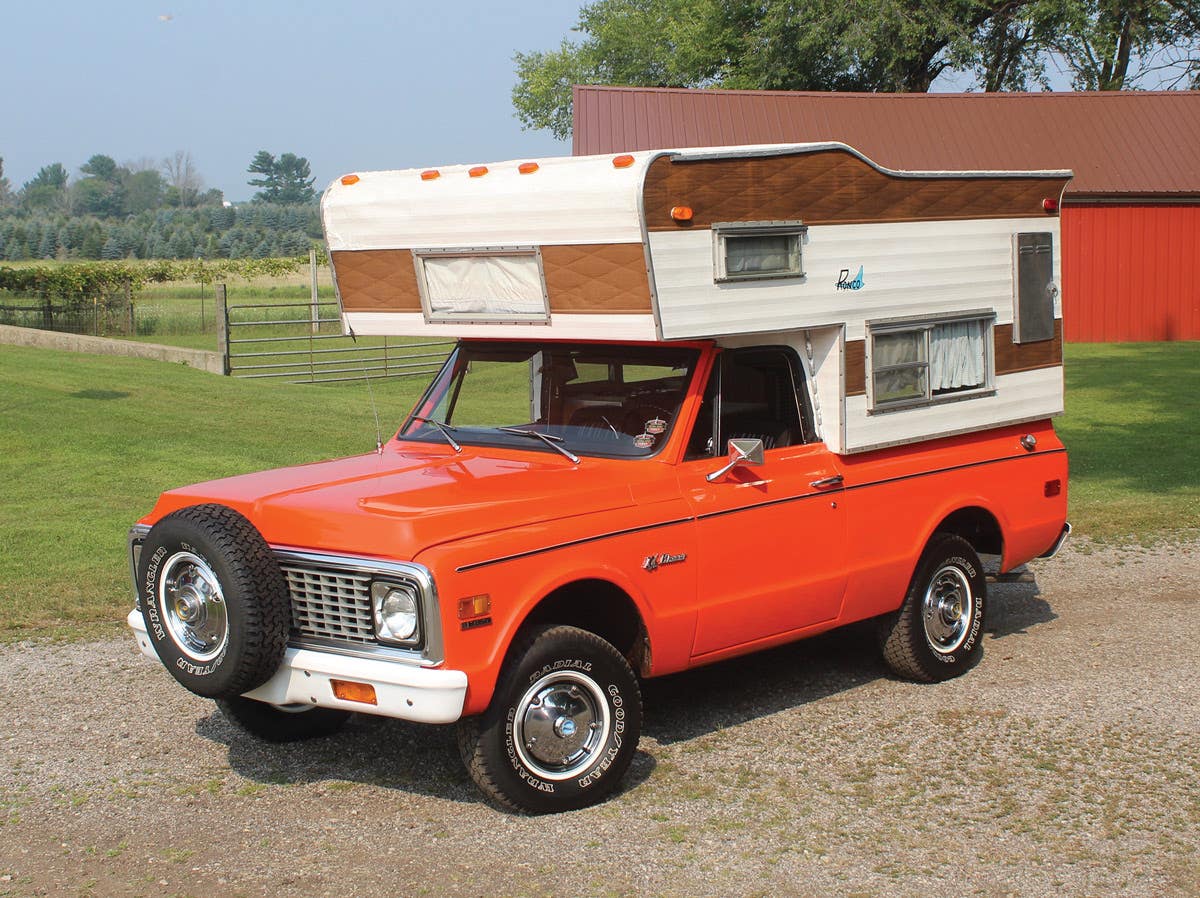side marker light in the filler piece is of a slightly different design than production cars. Freeze Frame Image LLC
In the super ’60s, Chrysler Corp. had a need for speed. Race wins on Sunday directly increased showroom sales on Monday, and so Chrysler took competition seriously on the quarter-mile strip and on the circle tracks of NASCAR. The company was at the top of the game in 1964 when it unleashed the 426 Hemi engine to drag racers and NASCAR teams only to be told by NASCAR the engine had to be homologated by offering a minimum of 500 to the buying public. After an incredibly dominant 1964 race season, the Hemi was outlawed for 1965. Chrysler bowed to NASCAR and soon added the Hemi to its dealer brochures, thus exceeding the minimum required to race and the engine returned to the track.
As the 1960s advanced, so did the race competition, especially between Chrysler Corp. and Ford Motor Co. As drivers barreled toward the 200-mph mark on NASCAR superspeedways, car manufacturers began steps to get them there by squeezing more speed through aerodynamics.
At Dodge, work was undertaken to make the new, second-generation Charger more slick. Although attractive design features, the B-body 1968 and 1969 Charger’s recessed front grille and rear backlite created significant drag. Work quickly began to correct these speed-inhibiting features and a special 1969 Charger model was built with a flush grille and backlite. The grille came from the Dodge parts bin and was a 1968 Coronet unit modified to fit the Charger body; the flush backlite required manufacture of a special metal plug that fit in the space between the back of the roof, the flying buttress-type C pillars and the deck lid. To accommodate this plug, the depth of the deck lid had to be shortened. To the A pillars, stainless-steel covers were added to further reduce drag. All of this work was completed for Dodge by Creative Industries of Detroit.
Dodge christened this slicker 1969 Charger the Charger 500, a nod to the homologation number required by NASCAR for the Charger 500 to compete. However, it’s believed as few as 392 were actually built. The possible reason for the small number is that Dodge was already planning another trick for later in the season.
The Charger 500 triggered in NASCAR what is now known as the Aero Wars. Ford Motor Co. shot back at the Charger 500 with special, slicker mid-size Ford Torino and Mercury Cyclone models with longer noses carrying flush grilles and specially rolled rocker panels in the quest to hit 200 mph. The results were the Ford Talladega, named for the new superspeedway that it was intended to conquer, and the Mercury Cyclone Spoiler II. Ford’s investments paid off and the Talladega was first to pass the 190-mph mark. The highly successful Talladega won 26 NASCAR races in the 1969 season, but Talladega wasn’t the location of one of its wins. That honor goes to a Charger. Specifically, a Charger Daytona.
The 1969 Charger Daytona was the next evolution of Dodge’s Charger 500-based aero warrior. It added to the Charger 500 a 23-inch-tall stabilizer wing on the rear fenders; a special sheet-metal “nose cone” that turned the flat face of the Charger into a wind-splitting wedge; specific front fenders and hood modeled after the upcoming 1970 Charger components; and fender-mounted cooling scoops. These aerodynamic features were influenced by wind-tunnel testing and helped the Charger Daytona become the first car to hit 200 mph on the Talladega NASCAR superspeedway, surely to the chagrin of Ford.
Again, Creative Industries was employed to undertake the conversion, and this time, Dodge officially met the 500-car requirement for homologation with 503 Charger Daytonas built.
The Daytona proved so successful on the NASCAR circuit that Plymouth followed suit. For 1970, Plymouth developed a very similar nose cone and rear wing to race its Road Runner as the Superbird.
or optional 426 Hemi. The prototype has the 440 Magnum. Freeze Frame Image LLC
Developing the Daytona
As development of the Charger Daytona began, it was named the Super Charger. Early discussion of the Super Charger/Daytona appears in a March 12, 1969, Chrysler Corp. Inter-Company Correspondence from H.D. Reeker to L.B. Wiser in which directions were given to “...proceed with the design and development work on this project per our discussion. Because of the tight timing overtime is to be used where necessary."
“The Charger Number for this phase of the project 4430-885-799."
A Dodge Division cost of Sales Charger Number will be furnished later to cover the cost of the production tooling and procurement.” It was signed by H. Dale Reeker and received by L.B. Wiser on March 13, 1969.
Prior to getting approval for the Super Charger project, Larry Rathgeb, Special Vehicle Group Head Stock Car Engineering, and Dodge Product Planner H. Dale Reeker presented drawings of the winged Charger to Bob McCurry, Vice President and General Manager of Dodge. McCurry reportedly said, “God, it looks awful, will it win races?” Rathgeb and Reeker assured him it would and they pled their case. McCurry gave approval to start the Super Charger/Daytona project on March 12, 1969.
was standard in the Charger SE upon which this Daytona was based. Freeze Frame Image LLC
About a month earlier, on Feb. 7, 1969, Chrysler Corp. produced a Dodge Charger R/T SE in Paint Code F6 (Bright Green Metallic) at the Hamtramck Plant. Delays with scheduling approval to ship the Charger R/T SE to the dealer allowed Reeker and his team to reroute it from retail sale to the engineering department where it would serve as an engineering test mule for what would become the Daytona. Reeker and his team were under an extremely tight timeline to get the Super Charger project up and running. Having the already-built Charger R/T available allowed them to get the project moving forward without delay.
On March 12, 1969 — the day of the aforementioned memo — Reeker was appointed to head up the Super Charger project in collaboration with Creative Industries to create a prototype and begin production of what would become the Dodge Daytona. The intent of it was not only to win NASCAR races, but to complete enough production cars to sell to the public, thus meeting NASCAR’s homologation requirements. Reeker and the project team were given a short timeline to start the process of building an engineering prototype. Reeker discovered the F6 Bright Green Metallic Charger R/T SE during a check of the inventory at the Hamtramck Plant and directed scheduling to officially place it into company service where it became the Super Charger program engineering Daytona prototype.
In a recent interview with Julie Moghal, daughter of Dale Reeker and spokesperson for her mother, Sandra Reeker, we were able to verify the history of the Charger Daytona prototype and add to its story.
According to Julie and Sandra, Reeker would drive the Charger Daytona prototype to his office in Highland Park, Mich., during the day, then at night he would drive it to Creative Industries, where the bodywork was being done. Sandra was pregnant at the time and remembers her husband bringing the bright green Charger home. She also recalls how she would wait in the car after riding along while he and the team at Creative Industries would hash out things while going back and forth about the car. The majority of the discussions were on how to improve the wing, with which Reeker was never completely satisfied, but had to accept due to the time crunch. When he was working on the final touches of the car, Reeker would drive it to Chrysler’s Chelsea Proving Grounds. At Chelsea, he and others would drive the car at the test track. Using the resulting data, they’d take it back to Creative Industries for further modifications.
Sandra Reeker specifically recalls her dad complaining about the cooling performance of the car. The scoops were added and mounted on top of the fenders as a last attempt to fix the cooling issue. She wasn’t sure of the exact timeline, but thought that is why the scoops didn’t appear on the car when it was photographed for a Playboy magazine article. (Dodge’s advertising department borrowed the car for the Playboy magazine photo shoot when design work was being done, and the fender scoops weren’t ready for installation on the car.) Reeker and Creative Industries later added the scoops as a final attempt to fix the cooling problem. In order to follow NASCAR rules, Reeker apparently told NASCAR inspection officials that the fender scoops were added for tire clearance when, in fact, they were designed for engine cooling purposes, and to help the car go faster.
When the project was completed, Creative Industries turned the Daytona over to Reeker, whose boss told him he could use the Daytona prototype. After using it as a daily driver for a couple months, Reeker turned it in and move on to the next project. He gave the Daytona back to Chrysler where it was added to its inventory as an engineering test pool car. Select Chrysler engineers were given permission to drive and evaluate the car.
Eventually, the Charger Daytona prototype was shipped to East Cleveland Dodge where it was put into its retail car inventory and available for sale to the public. It was advertised in the Cleveland Plain Dealer newspaper in October 1969. The advertisement stated, “Car formally belonged to Chrysler Engineering. Featured as a cover car and show car. Never titled, being sold with full warranty.”
From test car to private hands
Bobby Hodge was a liaison for the U.S. Army during the Vietnam War. His job was to help with bringing home fallen soldiers. At the time his military service ended, he was living in the Cleveland area and he decided to buy himself a new car. On Oct. 16, 1969, he bought a bright green 1969 Dodge Charger Daytona with a white wing and rear stripe from East Cleveland Dodge.
During a recent interview with Dr. Cyril Gostich, who was Bobby Hodge’s neighbor and eventual husband to Bobby’s sister, he recalled going for a ride in the new Dodge Daytona.
“I was 16 years old getting the crap scared out of me in the passenger seat at 118 mph,” Dr. Gostich recalled. He added that “the car had been featured in a Playboy spread just before Bobby bought it.” Bobby didn’t own the car for very long, maybe 6-12 months, as the payments were more than he could handle.
The Daytona prototype’s second owner was Gene Clinton. His son, Clyde Clinton, heard mention that his father won the Daytona during a poker game. Gene was known to play high-stakes poker and had won several cars over the years. Clyde has pictures of the Daytona painted orange-red with a black wing, Magnum wheels and black push-button door handles. He indicated his father only owned it for a short time, as with other cars he’d won.
In 1972, Albert Ousley purchased the Daytona from Bill Mayer Auto Sales in Mansfield, Ohio. Albert indicated that, when he bought the car, paperwork was including from Marshall Ford, a local car dealership. Albert said the car was the orange-red color with a black wing and has pictures to prove it. He installed American flag decals on the quarter panels in the black stripe that extended into the black rear wing. He also installed a set of chrome side pipes, and with plans to do some street racing, he installed a Six Pack intake and carburetor setup on the 440 Magnum engine. There was apparently a problem with the clutch, so he took the Daytona to his father-in-law’s house to work on it. The garage flooring and driveway were concrete, perfect for working on the car and its faulty transmission. While the Daytona was parked on jackstands in the driveway, his father-in-law forgot about it being there and backed into it, damaging the nose. Albert reportedly reached out to a local body shop to have the nose replaced and it informed him they couldn’t find a replacement nose and the damage was beyond repair. After getting the news, Albert put the car up for sale.
Les Bowman bought the Daytona from Albert in 1975 with plans to restore it. The original intake was in the trunk (minus the carburetor), and Les found a new-old-stock (NOS) nose cone at Glass City Dodge in Toledo. He then repaired and painted the Daytona in (F4) Charger Red and made other modifications, including changing the black push-button door handles to chrome. He installed a set of rally wheels and removed the C pillar and rear quarter panel emblems, believing they weren’t correct to the car.
After Les completed a mild restoration of the Daytona, he took it to the 1977 Wing Car Nationals in Michigan where it received a first-place award. The late David Patik, a Wing Car “guru,” questioned the car’s unique features and wondered whether it was a real Daytona. At the time, Les was not aware of his car being the Chrysler Engineering prototype, since the official registry of Daytona cars wasn’t yet available or made public until years later. Frustrated by the under-hood review at the show, Les slammed the hood and said, “That is enough of that.” He took the Daytona home and put it up for sale in 1978.
A body shop couldn’t locate the parts to fix it and so Ousley sold it. Freeze Frame Image LLC
Note the matching reddish orange paint between the wheel spokes. Freeze Frame Image LLC
About this time, the Rizek family reached out to Les to have him restore their 1970 Plymouth Superbird. The restoration was completed in early 1978 and returned to the family. After delivery, a couple issues were noticed so Les picked up the Superbird for repairs and left his Daytona at the Rizeks’ home with a “for sale” inside the windshield. Shortly thereafter, the Rizek family purchased the car for themselves. It sat in storage for 25 years with only a couple miles added to its odometer since 1978.
In 2003, John Rizek bought the Daytona from his family. A few years later, he had the opportunity to speak with Les about the Daytona in more detail. Les provided additional information, adding to John’s curiosity.
In 2009, John began a journey to thoroughly research the Daytona and contacted Wing Car expert David Patik, who told John they needed to determine if the car was real or not. David recalled seeing the Daytona years earlier, when Les showed it for the first time at the Wing Car Nationals. John wanted to know more about its uniqueness, and with his interest piqued, he contacted another respected Wing Car expert, Gene Lewis, who completed a visual inspection of the car in 2010. After a lengthy inspection, Gene asked John, “Do you know what you have here?” He explained that the car was the first Daytona built and had many one-of-a-kind prototype features.
In 2010, John hired Galen Govier to do a full in-person inspection of the car. Galen documented the car as being numbers-matching, and described it as the “pre-production Charger Daytona, referred to as the Playboy Daytona.” He also noted the carburetor was not correct to the car. With help from Ken Mosier, a date-code-correct carburetor was located and installed on the Daytona.
In 2023, John met historian Matt Clark, who asked John if he could further research the Dodge Daytona. John agreed and Matt started the journey to locate as much information as he could about the car. Matt reached out to Sandra Reeker, Dale Reeker’s wife; Julie Moghal, Reeker’s daughter; Dr. Cyril Gostich, brother-in-law to first owner Bobby Hodge; Clyde Clinton, son of the car’s second owner; and third owner Albert Ousley.
John gives special thanks to Matt for all the long hours he spent researching the “Playboy Daytona.” His passion and determination to complete the research, including locating and contacting people who had firsthand knowledge, was paramount to documenting the history of this legendary Aero Wing Car.
The story as it unfolded
Nearly a decade ago, I met John Rizek at the Muscle Car and Corvette Nationals (MCACN) in Rosemont, Ill., after a formal introduction through Ken Mosier, owner of Finer Details in Dansville, Ill.
It all started during a discussion with Ken about the history of the Dodge Daytona Aero Wing car. At the time, I was gearing up to document a 1969 Charger NASCAR chassis believed to be the Rossi’s Automotive Engineering car raced by NASCAR Hall of Famer Bobby Allison. During our discussion, Ken mentioned knowing the whereabouts of the 1969 Dodge Charger Daytona prototype. He said this Daytona was believed to be the first one built and appeared in Playboy magazine.
Ken introduced me to John Rizek, owner of the Daytona prototype. After speaking with John, I learned he displayed the Daytona at his private collection in Walkerton, Ind. My interest was piqued after meeting John and hearing about how it had been in his family since 1978. At some point during our introduction, I asked if he had ever driven it on the open road and John said he had not. I indicated an interest in photographing it at a private outdoor location for an article, but John said he had no plans of taking it outdoors; if I wanted to write an article about the car, I’d have to photograph it while housed in his collection. Since I only photograph cars outdoors or in studio settings, the photo shoot didn’t immediately progress.
For more than a decade, John and I would get together at MCACN, and for the most part, the topic of doing a photo feature about the Daytona prototype remained in limbo until November 2024. During last year’s MCACN, John expressed an interest in moving forward with a photo feature. In the spring of this year, John caught me off guard when he indicated that taking it to a private location was probable; in fact, he planned on purchasing a set of road tires and wheels after having his mechanic go through the engine and drive-train to make it road-worthy again. Less than a month later, John called to say the car was ready.
The plan was to drive it to the location, and with help from his son Josh and grandson Jayce, the new wheels and tires would be swapped out at the location for the old redline bias-plies that had been on the car since it was restored in the 1970s.
On April 26, 2025, (aka “426 Day”), history was made when John drove his Dodge Daytona prototype on the open road for the first time in many years. The Daytona performed flawlessly on its short trip to the private location where I’d arranged our photo shoot. When I arrived on the scene a few minutes later, I helped John position the Daytona for its moment in front of the camera lens. John, Josh and Jayce worked like a racing pit team to swap the wheels and tires. As I looked at three generations of Rizeks working together to prepare the Daytona for the photo shoot, reality sank in. The photo shoot was really happening. They stepped aside and I looked through the viewfinder of my Nikon at the stunning red Daytona and the internal switch flipped: it was time to make automotive history once again.
Is it MoPar or no car for you? Here are a few more articles for your reading enjoyment.
SHOW US YOUR WHEELS!
If you’ve got an old car you love, we want to hear about it. Email us at oldcars@aimmedia.com


